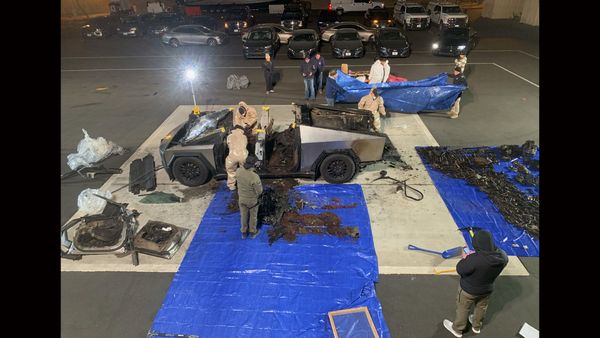
Without really getting into the story of Starlink: Battle For Atlas, I want to talk about the time I’ve spent with the game and why I think it’s such a great space adventure.
Ubisoft is attempting to revive the Toys-to-Life genre here, with a game that links physical spaceships and miniatures to the digital experience. It does so in one of the best, most stylish ways I’ve ever seen.
For one thing, the spaceships themselves are really cool toys, and the minis—all characters in the game—are colorful and detailed. It’s exactly the kind of toy I played with as a kid (minus the video game integration.)
Specifically, they remind me of the old Starcom toys—those spaceships with the little guys that had magnets on their feet. I loved those as a kid. These aren’t the same, but they remind me of them.
You can swap in and out different guns for each of your ships, and different pilots to fly each one. Mixing and matching ship parts is fun and makes for plenty of variety. Different guns interact with each other in interesting ways as well, meaning you can combine arsenal to come up with cool combo effects.

Each of these pilots is a featured character in the game so no matter who you play as, they’ll be part of the story, and you can play as aliens who join your crew as well. If your ship is defeated in combat you can use a different one. If you only have one, or run out of ships you’ll need to start back at your last checkpoint. This definitely gives players an advantage if they buy more ships, but at least you’re getting awesome toys in the process rather than just paying for digital ships.
On the Nintendo Switch, you hook up the Joycon controllers to a special dock that you then attach your spaceship and pilot to. So you’re holding these in your hand as you play, which is a nice touch.
The gameplay is something of a mix between No Man’s Sky, Mass Effect and Star Fox (especially since there’s quite a lot of Star Fox content in the Switch version.) The basic gameplay loop of going from planet to planet and exploring the surface is remarkably similar to No Man’s Sky, except that there’s a story and dialogue taking place at the same time. You also fight a much wider range of enemies. But there’s still scanning alien species, harvesting resources and all the rest.
You can lift off from the planet you’re on and zoom over to another at will, though you’re likely going to be attacked by space pirates in the process. In-between exploration and missions there are cut-scenes featuring all the main characters. It would be great if there had been non-ship gameplay—at least allowing pilots to walk around the home-base ship—but this is a flying game, not a walking one and that’s fine.

The characters are all fun and likable so far, and the gameplay itself is engaging and—while certainly not as in-depth as many other titles—quite a lot of fun. It’s a game that’s easy to get into and pick up right away, and flying around having dogfights in space or exploring the outlandish planets and helping out various communities of aliens against the bad guys is a blast.
As nice as the toys are and as much as I think the concept makes sense, it does worry me that it will be a bit too limiting. A space RPG like this not tethered to physical toys would be able to introduce a lot more weapons and weapon types, a lot more ships and ship types and so forth. Tying gameplay to toys creates artificial limits on what the game itself can do, which is a shame. Still, both I and my 8 year old son have enjoyed Starlink a great deal. I find it far more engaging than the much slower-paced No Man’s Sky. Having characters you care about and an interesting story certainly helps.
Missions do get a bit repetitive after a while, but the excellent combat largely makes up for it. I do wish a bit more love had gone into mission design and making each planet feel as different in that respect as they do in terms of aesthetics. Lots and lots of love has gone into the world design in this game, but not quite as much into variety of gameplay.

That being said, as much as I like the toys, I think this game would have been a deeper, more enjoyable experience if it had simply been designed as a more traditional space RPG where you earn spaceships and weapons through gameplay instead of with your hard-earned cash. I still recommend it, especially for kids, but there’s no denying the lost potential.
Ubisoft has timed this pretty well, too, with pretty much no other toys-to-life competition now that Skylanders is on hiatus and both Disney and LEGO have cancelled their own toys-to-life projects. The game is certainly at the top of my Christmas gift guide list, and I think even if toys-to-life isn’t your thing, you’ll enjoy the game for its gorgeous planets, excellent combat and quirky story. I also like the fact that this doesn’t feel like your typical Ubisoft game. There’s so many similarities across The Division, Ghost Recon, Assassin’s Creed and Far Cry at this point, that having something a little off the beaten path is refreshing.
A quick note about different versions of this game: You can buy the digital-only version (with no physical ships/toys) for $59.99 and it comes with four ships—actually five if you get the Nintendo Switch version. This means you can get a lot more content, sans the toys, for a lot less money. A similar amount of physical toy ships would easily cost over $100, possibly closer to $150. You can also purchase digital ships and weapons in-game without buying the toys regardless of which edition you buy.

The Good:
- Excellent gameplay—combat and exploration are tons of fun
- A quirky cast of characters in an engaging story
- Beautiful graphics and detailed planets (and the Switch handles it fine)
- Solid, detailed toys that are fun to play with outside of the game
The Bad:
- Expensive when you start tacking on all the toys
- Having fewer ships means fewer lives
- Repetitive mission design
- Toys limit your upgrades and lead to less diverse gameplay
The Ugly:
- There’s really nothing ugly about this game. It’s gorgeous.
I’ve been playing my copy on the Nintendo Switch. Game and toys were provided by Ubisoft for review purposes. Check in on my colleague Mitch Wallace’s blog for our official scored review of the game.







